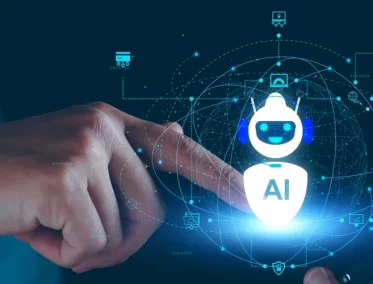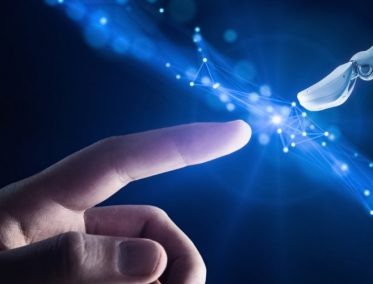In today’s digital environment, the volume and complexity of security threats continue to increase, making it crucial to have robust incident detection and response mechanisms in place. Artificial intelligence (AI) and machine learning (ML) technologies have emerged as powerful tools in the realm of cybersecurity. These advanced algorithms can analyze vast amounts of data, identify patterns, and detect anomalies that may indicate security incidents.
AI in incident response utilizes techniques such as anomaly detection, behavioral analytics, and predictive modeling enable organizations to automate and enhance their incident detection processes. By leveraging these technologies, security teams can process large datasets in real-time, identify suspicious activities, and respond promptly to potential threats. The scalability, speed, and ability to handle complex data sets make AI invaluable in the fight against cyber threats.
The Role of Human Analysts in Incident Response
While AI technologies offer significant benefits, human analysts play a critical role in the incident detection and response process. These analysts possess unique capabilities that complement the power of AI. They bring critical thinking, domain expertise, and intuition to the table, allowing them to understand the context, nuances, and intent behind security incidents.
Human analysts are adept at interpreting the insights generated by AI and ML systems and applying their expertise to validate and contextualize the findings. They possess the ability to make informed decisions based on their deep understanding of the organization’s systems, network infrastructure, and threat landscape. They also excel at identifying false positives, providing additional context to incidents, and performing in-depth investigations that may require creative problem-solving.
Leveraging the Synergy Between AI and Human Analysts
The true strength in the incident response lies in the partnership between AI and human analysts. By combining the speed and scalability of AI technologies with the expertise and contextual understanding of humans, organizations can achieve more effective detection and efficient incident response capabilities.
Collaboration between AI systems and human analysts is crucial for continuous learning and improvement in the incident response. Analysts can provide feedback to AI and ML models, helping to refine algorithms and improve accuracy. They can also train AI and ML systems by labeling and categorizing incidents, enabling the technology to learn from historical data and adapt to emerging threats.
Real-life examples demonstrate the power of this dynamic partnership. When AI/ML systems flag potential incidents, human analysts can investigate further, apply their expertise to validate the findings, and make informed decisions on the appropriate response. The combination of AI and humans enables organizations to detect and respond to incidents swiftly and effectively.
Overcoming Challenges and Maximizing Partnership for Efficient Incident Response
While AI and ML technologies offer significant benefits, they also face challenges. AI systems may struggle with understanding complex contexts, detecting subtle anomalies, or accurately distinguishing between legitimate and malicious activities. Human analysts can bridge these gaps by providing the necessary context and critical thinking skills.
To maximize the partnership, organizations should invest in ongoing training and skill development for the analysts. This includes staying updated with the latest AI and ML technologies, understanding their capabilities and limitations, and adapting to AI-driven workflows. Effective communication and collaboration between AI systems and human analysts are essential to ensure seamless integration and synergy for effective incident response.
Ethical Considerations
As organizations increasingly rely on AI and ML in incident response, ethical considerations come into play. It is crucial to ensure that AI and ML systems are designed and deployed in an ethical manner. Human oversight and decision-making are necessary to prevent biases, maintain fairness, transparency, and accountability.
Organizations must prioritize the ethical use of AI and ML technologies, considering privacy concerns, data protection regulations, and potential social implications. Human analysts play a vital role in assessing the ethical implications of AI/ML-driven decisions and ensuring that the use of these technologies aligns with legal and ethical standards.
Future Directions and Trends
Looking ahead, AI and ML technologies will continue to evolve, providing even more sophisticated capabilities for incident detection and response. Advancements in natural language processing, deep learning, and automated reasoning will enhance the accuracy and efficiency of AI/ML systems.
One emerging trend is the integration of AI and ML technologies into security orchestration, automation, and response (SOAR) platforms. These platforms combine the power of AI and ML with automated workflows, enabling organizations to streamline incident response processes and orchestrate actions across different security tools and systems.
Additionally, the rise of explainable AI and ML models will address the “black box” challenge, allowing human analysts to understand and interpret the reasoning behind AI and ML-driven decisions. Explainable AI and ML will enable better AI and human collaboration, fostering trust and transparency.
Another significant development is the concept of “human-in-the-loop” or “human-on-the-loop” approaches. These approaches involve integrating analysts directly into the AI workflow, allowing them to validate, fine-tune, and augment the outputs of AI systems. This iterative feedback loop in the incident response management cycle enhances the accuracy and relevance of the models.
As the threat landscape evolves, the systems must also adapt to ensure effective incident response. Continuous learning and upskilling programs will be essential for the systems to stay ahead of emerging threats and evolving attack techniques and enhance incident response capabilities.
Real-Life Examples of AI in Incident Response
- A large financial institution implemented an AI-powered anomaly detection system that continuously monitors network traffic patterns. The system detected unusual network behavior indicative of a potential cyber attack, enabling the security team to respond quickly and mitigate the threat before any significant damage occurred.
- A cybersecurity firm developed an AI-based malware detection system that uses machine learning algorithms to analyze file behavior and identify previously unseen malware strains. The system successfully detected and blocked sophisticated malware attacks, providing proactive defense against evolving threats.
Real-Life Examples of Human Analysts in Incident Response
- During a security incident, a human analyst played a crucial role in investigating and identifying the root cause of a data breach. Through extensive analysis of system logs and network traffic, the analyst traced the attack back to a compromised user account and took immediate action to contain the incident, prevent further damage, and restore system integrity.
- In a complex cyber attack targeting a government organization, human analysts collaborated to analyze and correlate data from multiple sources, including network logs, intrusion detection systems, and threat intelligence feeds. Their expertise in understanding the attacker’s tactics, techniques, and procedures (TTPs) allowed them to create a comprehensive incident response plan and implement effective mitigation strategies.
Real-Life Examples of AI and Human Collaboration for Incident Response
- A security operations center (SOC) utilizes an AI-powered SIEM (Security Information and Event Management) system that automatically collects and analyzes security logs from various sources. Human analysts work in tandem with the system, validating and investigating potential incidents flagged by the AI, and providing contextual understanding and decision-making capabilities to determine the severity and appropriate response.
- In a financial services company, AI algorithms monitor customer transactions for fraudulent activities. When suspicious patterns are detected, alerts are generated and sent to human analysts who review the flagged transactions, conduct additional investigations, and make the final determination on whether the activities are fraudulent or legitimate.
In conclusion, the AI and human collaboration is a dynamic and powerful combination for effective incident detection and response. Leveraging the strengths of both sides, organizations can harness the scalability, speed, and analytical capabilities of AI/ML while benefiting from the contextual understanding, critical thinking, and expertise of human analysts. This collaboration will be instrumental in safeguarding organizations’ digital assets and maintaining a robust cybersecurity posture in an increasingly complex threat landscape.




